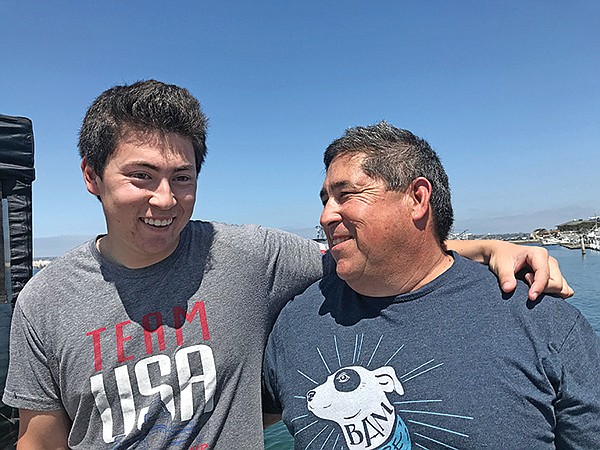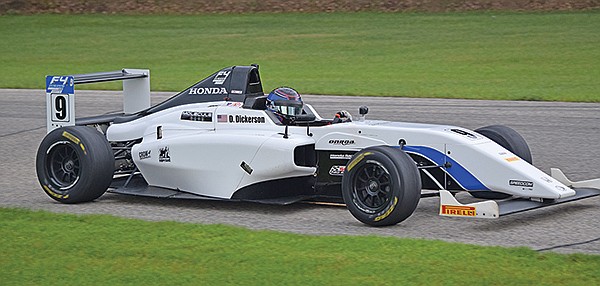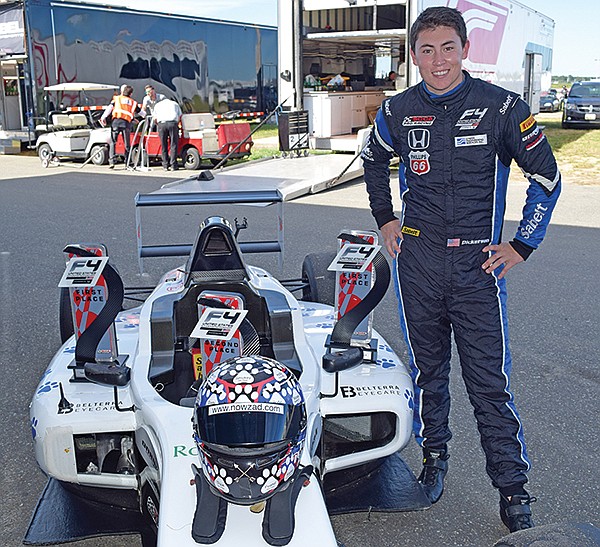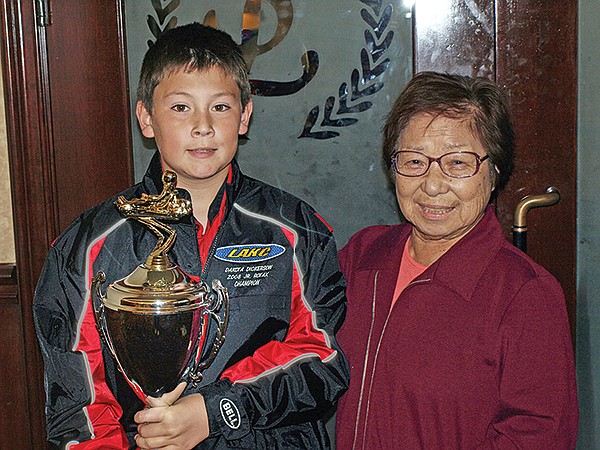 Facebook
Facebook
 X
X
 Instagram
Instagram
 TikTok
TikTok
 Youtube
Youtube


The guy is 21. When I was 21, I didn’t yet have my first car (which would be a Fiat 500). This guy — from San Diego — is driving Formula 4 cars 150 miles per hour at tracks all around the country. And he entered last week’s final two races at Austin’s Circuit of the Americas, already the unbeatable national champion for 2018, 59 points ahead of his nearest competitor. The only bigger race that day: the Formula One, with the world’s top drivers in contention.

His name is Dakota Dickerson. Lives, grew up in Poway-Rancho Peñasquitos, and I happened to meet him at the Tuna Harbor dockside market.
“My grandma Kimiko — everyone called her Kim — was born in Japan, married my grandfather who was a Marine in Korea and Vietnam, and once she settled in here in the States, drove go-karts well into her old age,” says Dakota. “All my family did. So I guess it’s in the blood.”

Dickerson was at the pier with his barrel-chested dad Ken, who you could see adores the kid. And the kid adored driving, from age six.
“And from the moment I first sat in an F4,” he says, “I knew this was what I wanted to do.”
That happened at the Skip Barber Racing School in Laguna Seca, Salinas, four short years ago. He was 17. He gave up baseball and found sponsors to help him enter the F4 club. “$100- $150,000 is what it costs to operate an F4 team for each 17-race season,” he says, “which is nothing compared to F1, but still a huge amount of money if you’re 17 years old and not personally rich.”

Our second conversation happened last week, four days ahead of the Austin, Texas meet. He was happy but also pumped. He knew that with the world’s top drivers and their agents there, how he performed on the day could change his life.
“This is massive,” he says. “These will be the last two races. We’ve done 15, I’ve won 3, and 10 were podium results (i.e. he was in the top three), and I was in the top five in 14 of the 15 races. It’s about consistency.”
He says that automobile racing is surprisingly cerebral, “like basketball,” where speed and complexity force you to think ahead, act deliberately. “My style is calculated. People say I’m too calculated. Others are more impulsive. They’re young, fresh out of go-karts, eager to be picked up in Formula One. But they also have a lot of DNFs.”
DNF means “Did Not Finish.” Spin-os, crashes, engines pushed too hard.
Incredibly, he says he is seen as the old man of the F4 circuit. At 21? “Oh yes. The average age of F-4 racing drivers is 17. My teammate (Brazilian Eduardo Barrichello) is 16. Others are 14. So they tend to be aggressive, ambitious. Me, normally if I’m on a straight and contemplating passing the next guy, I hold back if there’s a corner coming up. I avoid crashes. I look after the car. It’s ingrained in me. I don’t have the money. So, I go for consistency.”
All that may change at the Circuit of the Americas. If he performs well in the last two races, with a quarter million spectators and lots of agents watching, he may have more money to take more chances.



The guy is 21. When I was 21, I didn’t yet have my first car (which would be a Fiat 500). This guy — from San Diego — is driving Formula 4 cars 150 miles per hour at tracks all around the country. And he entered last week’s final two races at Austin’s Circuit of the Americas, already the unbeatable national champion for 2018, 59 points ahead of his nearest competitor. The only bigger race that day: the Formula One, with the world’s top drivers in contention.

His name is Dakota Dickerson. Lives, grew up in Poway-Rancho Peñasquitos, and I happened to meet him at the Tuna Harbor dockside market.
“My grandma Kimiko — everyone called her Kim — was born in Japan, married my grandfather who was a Marine in Korea and Vietnam, and once she settled in here in the States, drove go-karts well into her old age,” says Dakota. “All my family did. So I guess it’s in the blood.”

Dickerson was at the pier with his barrel-chested dad Ken, who you could see adores the kid. And the kid adored driving, from age six.
“And from the moment I first sat in an F4,” he says, “I knew this was what I wanted to do.”
That happened at the Skip Barber Racing School in Laguna Seca, Salinas, four short years ago. He was 17. He gave up baseball and found sponsors to help him enter the F4 club. “$100- $150,000 is what it costs to operate an F4 team for each 17-race season,” he says, “which is nothing compared to F1, but still a huge amount of money if you’re 17 years old and not personally rich.”

Our second conversation happened last week, four days ahead of the Austin, Texas meet. He was happy but also pumped. He knew that with the world’s top drivers and their agents there, how he performed on the day could change his life.
“This is massive,” he says. “These will be the last two races. We’ve done 15, I’ve won 3, and 10 were podium results (i.e. he was in the top three), and I was in the top five in 14 of the 15 races. It’s about consistency.”
He says that automobile racing is surprisingly cerebral, “like basketball,” where speed and complexity force you to think ahead, act deliberately. “My style is calculated. People say I’m too calculated. Others are more impulsive. They’re young, fresh out of go-karts, eager to be picked up in Formula One. But they also have a lot of DNFs.”
DNF means “Did Not Finish.” Spin-os, crashes, engines pushed too hard.
Incredibly, he says he is seen as the old man of the F4 circuit. At 21? “Oh yes. The average age of F-4 racing drivers is 17. My teammate (Brazilian Eduardo Barrichello) is 16. Others are 14. So they tend to be aggressive, ambitious. Me, normally if I’m on a straight and contemplating passing the next guy, I hold back if there’s a corner coming up. I avoid crashes. I look after the car. It’s ingrained in me. I don’t have the money. So, I go for consistency.”
All that may change at the Circuit of the Americas. If he performs well in the last two races, with a quarter million spectators and lots of agents watching, he may have more money to take more chances.
Comments